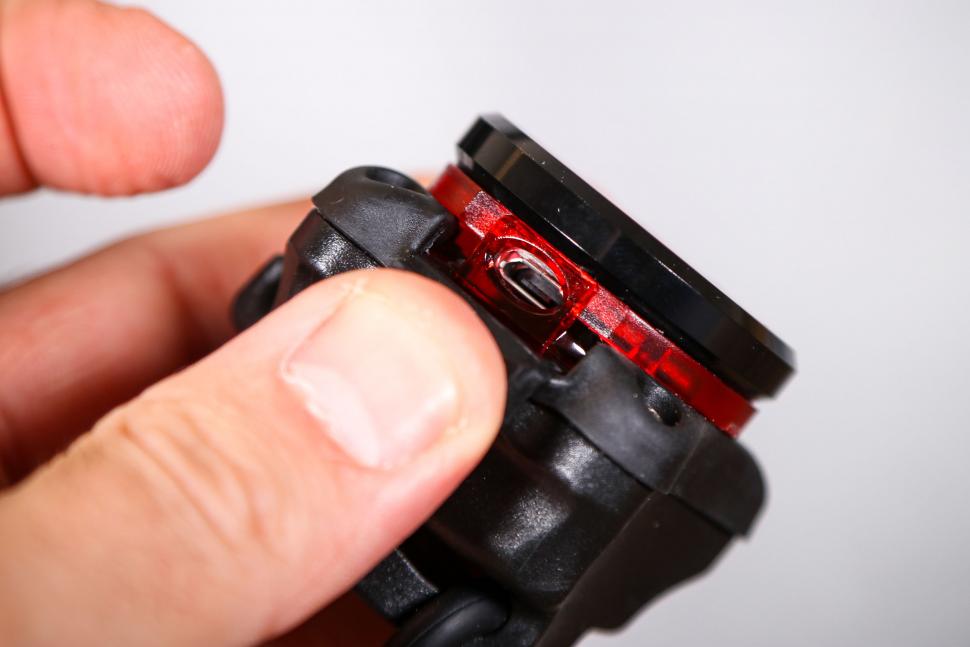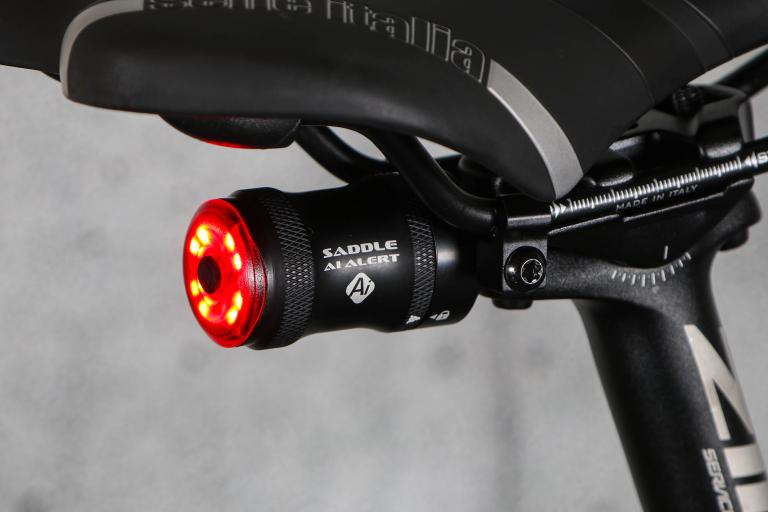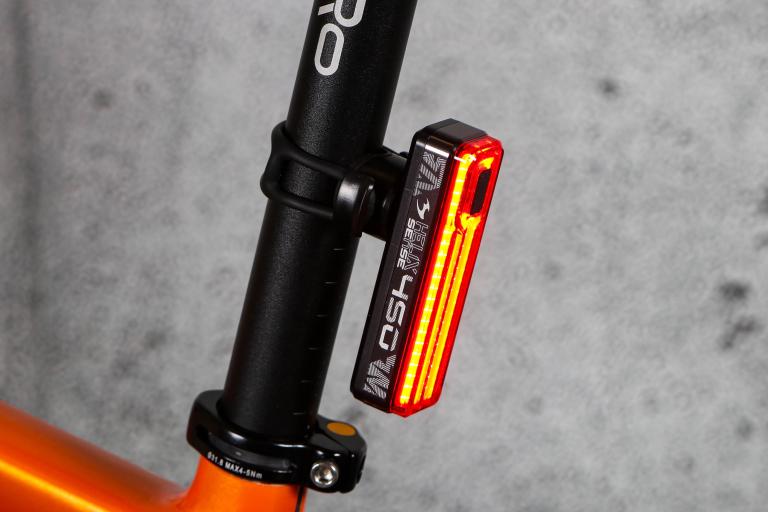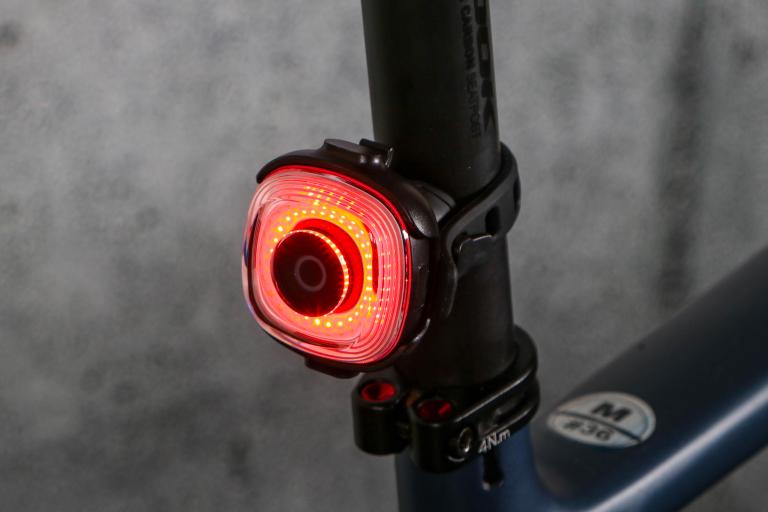- News
- Reviews
- Bikes
- Components
- Bar tape & grips
- Bottom brackets
- Brake & gear cables
- Brake & STI levers
- Brake pads & spares
- Brakes
- Cassettes & freewheels
- Chains
- Chainsets & chainrings
- Derailleurs - front
- Derailleurs - rear
- Forks
- Gear levers & shifters
- Groupsets
- Handlebars & extensions
- Headsets
- Hubs
- Inner tubes
- Pedals
- Quick releases & skewers
- Saddles
- Seatposts
- Stems
- Wheels
- Tyres
- Tubeless valves
- Accessories
- Accessories - misc
- Computer mounts
- Bags
- Bar ends
- Bike bags & cases
- Bottle cages
- Bottles
- Cameras
- Car racks
- Child seats
- Computers
- Glasses
- GPS units
- Helmets
- Lights - front
- Lights - rear
- Lights - sets
- Locks
- Mirrors
- Mudguards
- Racks
- Pumps & CO2 inflators
- Puncture kits
- Reflectives
- Smart watches
- Stands and racks
- Trailers
- Clothing
- Health, fitness and nutrition
- Tools and workshop
- Miscellaneous
- Buyers Guides
- Features
- Forum
- Recommends
- Podcast
review
 Lezyne Zecto Drive Max 250
Lezyne Zecto Drive Max 250£52.00
VERDICT:
Bright, reliable, simple and very well made – the quality is (probably) worth the slight premium
Excellent build
Long run-times
Very bright
Brighter than you might really need
A little expensive
Weight:
72g
Contact:
At road.cc every product is thoroughly tested for as long as it takes to get a proper insight into how well it works. Our reviewers are experienced cyclists that we trust to be objective. While we strive to ensure that opinions expressed are backed up by facts, reviews are by their nature an informed opinion, not a definitive verdict. We don't intentionally try to break anything (except locks) but we do try to look for weak points in any design. The overall score is not just an average of the other scores: it reflects both a product's function and value – with value determined by how a product compares with items of similar spec, quality, and price.
What the road.cc scores meanGood scores are more common than bad, because fortunately good products are more common than bad.
- Exceptional
- Excellent
- Very Good
- Good
- Quite good
- Average
- Not so good
- Poor
- Bad
- Appalling
The Lezyne Zecto Drive Max 250 is not a new design and has been surpassed for sheer power, but it remains an excellent, highly reliable and very visible rear light. To be frank, even 250 lumens is potentially excessive for a rear light, so it's hardly lagging in the real world.
Little has changed with this light since Stu reviewed it in 2018 – so little, in fact, it's best if you read his for most of the details. I'll concentrate on what's changed – and what hasn't.
> Find your nearest dealer here
It now has five flashing modes instead of three; two are designated Day Flashes, and these are the most powerful at 250 or 125 lumens. Quite frankly, the brightest setting is painful to look at even from the side, and I agree with Stu – use it after dark and you're going to annoy following drivers.
You also get two 35-lumen flash patterns and a 10-lumen one that's a little dim, but lasts a full 24 hours. I ended up favouring one of the 35s (even in the day, though dull ones), and both last very usable times. The six and seven hour claims are accurate; two hours of cold riding on Flash 1 doesn't even drop the battery to 75 per cent.
The maximum solid mode is also 35 lumens, but is really very bright, especially when viewed in a dead straight line. The 5-lumen Economy mode is again a little dim but again lasts 24 hours, while the 20-lumen Enduro is good for over 9 hours.
Externally the Max hasn't changed at all, which is both good and bad. It's good because the big, round face is very visible, the slivers of side illumination are welcome, and both the silicone strap and charging port bung work perfectly.
Stu mentioned the bung in his review and wondered how it would work with age; I've been running two Zecto lights for years now (from when the bezels were done in silver) and the answer is, there's no change. Mine still seal without issue, and for that matter the ladder straps haven't stretched or weakened either.
I like how the strap is trapped at one end, too – it's annoying when they fall off every time you remove a unit from your bike.
What's not so good is that there's still no padding on the plastic clip, so these can potentially scratch posts when dirt gets under it. The light can also slip sideways rather easily, though only by a few degrees each way.
Lezyne also hasn't changed the main thing I dislike, which is the battery indicator. It uses four small LEDs in the sides, but they're all different colours. Why use number coding (how many remain lit) and colour coding at the same time? And shouldn't 100 per cent charge be green? Here it's blue.
These things are further muddied by the red lens changing both the apparent colour and brightness of some of these LEDs, to the point where Lezyne has written a blog post to explain it to confused customers.
The final confusion, since Lezyne altered these lights to only display charge when you first switch on, or off, or half press the button, is that the rest of the time one (reddish) LED stays on. This is presumably for side lighting, but it looks like a typical low battery warning.
Basically, it's overcomplicated and in all the years I've been using Zectos, it hasn't become intuitive (especially when mixing them up with other lights too). On the upside, the run-times are good, a full recharge only takes about 2.5hrs, and I've rarely been caught out by the battery.
Value
The price hasn't risen much in almost four years – it's £52, and was £48 in 2018. However, today that's a little on the high side for the output. The Cateye Viz 450 pumps out an energy-weaponish 450 lumens for £49.99, for instance, and its see-through design gives excellent all-round visibility for those whose eyes still function afterwards.
Its 'little' brother, the Viz 300, still beats the Zecto at full whack and is £39.99.
Also, Lezyne's own Strip Pro Alert Drive features clever (if oversensitive) brake light tech and does 300 lumens for just a fiver more at £57.
> Buyer’s Guide: 22 of the best rear lights for cycling
That said, it's debatable whether you even need this much power in a rear light, let alone more, so it's perhaps not the best metric for judging them. Still-very-bright 100-lumen lights, such as the Gemini Juno or Magicshine SeeMee 100, can be had for around £25-£30.
Overall
The Zecto Max is more than bright enough, extremely well made and gives really useful run-times in all of its modes. It's very likely to keep doing a good, simple job for years to come, too, which goes a good way towards justifying its slightly high price.
Verdict
Bright, reliable, simple and very well made – the quality is (probably) worth the slight premium
road.cc test report
Make and model: Lezyne Zecto Drive Max 250
Size tested: 250 lumens
Tell us what the light is for, and who it's aimed at. What do the manufacturers say about it? How does that compare to your own feelings about it?
Lezyne's UK distributor Upgrade says: "Super compact, ultra-visible taillight with increased battery capacity. The Lezyne Zecto Drive Max 250's three LED system produces up a 250 lumens in Daytime Flash mode. Eight total modes including the long-lasting Economy Mode for up to 24 hours runtime. Durable composite matrix construction featuring a machined aluminium faceplate. The Lezyne Zecto Drive Max 250 has a patented versatile 2-in-1 clip and strap mountain system and rechargeable micro-USB.
Tell us some more about the technical aspects of the light?
Upgrade lists:
* Max 250 lumens/24 hour runtime in Flash mode.
* Highly disruptive Daytime Flash mode.
* Eight combined lumen and flash output modes.
* Patented 2-in-1 clip and strap mounting system for multiple mounting options.
* Colour: Black
Rate the light for quality of construction:
9/10
Rate the light for design and ease of use. How simple was the light to use?
7/10
The battery indicator is overcomplicated and the button is stiff, but these prove niggles rather than real problems.
Rate the light for the design and usability of the clamping system/s
7/10
Quick, secure and easy, though could use some padding to avoid potential scratches.
Rate the light for waterproofing. How did it stand up to the elements?
9/10
Rate the light for battery life. How long did it last? How long did it take to recharge?
9/10
With a minimum run-time of six hours, it's a light you can confidently fit and forget.
Rate the light for performance:
9/10
The 250-lumen 'day flash' is almost too bright – this thing has serious power if you want it.
Rate the light for durability:
9/10
I've been running near-identical Zecto units for years without issue.
Rate the light for weight:
8/10
Rate the light for value:
4/10
Tell us how the light performed overall when used for its designed purpose
Very well – it's big, bright, reliable and runs for very useful lengths of time.
Tell us what you particularly liked about the light
Just about everything.
Tell us what you particularly disliked about the light
The battery indicator is overcomplicated and unintuitive.
How does the price compare to that of similar products in the market, including ones recently tested on road.cc?
The price hasn't risen much in almost four years – it's £52, and was £48 in 2018. However, against today's lights that's a little on the high side for the output. The Cateye Viz 450 pumps out an energy-weaponish 450 lumens for £49.99, for instance, and its see-through design gives excellent all-round visibility for those whose eyes still function afterwards.
Did you enjoy using the light? Yes
Would you consider buying the light? Yes (I did!).
Would you recommend the light to a friend? Yes
Use this box to explain your overall score
The Zecto Max is more than bright enough, extremely well made and gives really useful run-times in all of its modes. It's very likely to keep doing a good, simple job for years to come, too, which goes a good way towards justifying its slightly high price. The battery indicator needs a redesign, but it's awkward rather than unusable or inaccurate, so has not affected the score.
About the tester
Age: 48
I usually ride: Vitus Zenium SL VR Disc My best bike is:
I've been riding for: 10-20 years I ride: A few times a week I would class myself as: Experienced
I regularly do the following types of riding: general fitness riding, mtb,
Latest Comments
- mark1a 2 hours 7 min ago
Still here, just showing a few signs of wear and tear. Hopefully still serviceable for some years to come.
- David9694 2 hours 10 min ago
Oxfordshire village building car crash near Witney...
- Secret_squirrel 2 hours 37 min ago
Has he fully recovered though, and will he ever?...
- Rendel Harris 2 hours 52 min ago
How can you know that you are "equally fearful" as "any female cyclist"? There is no possible way of quantifying such emotions and female cyclists...
- chrisonabike 3 hours 24 min ago
I think it would be fairer to blame the moon - as in "my client is a loony".
- Bungle_52 3 hours 47 min ago
Nice idea but Gloucestershire Constabulary are not interested as exemplified by this prvious NMOTD. Not only was there NFA for the close pass in...
- hawkinspeter 5 hours 19 min ago
I think black boxes are great for early detection of cognitive decline and/or sight problems. Someone's driving is going to become much less smooth...
- Bigtwin 5 hours 55 min ago
It's a fashion. https://guildford-dragon.com/shalford-driver-who-smashed-shalford-war-me...
- MTL Biker 6 hours 16 min ago
Robin Phans .....








Add new comment
15 comments
I have been running this lamp front and back on my butt pack suspender straps past two years now. Driver's seem less surprised when given a heads up.
I would note that the charging connection is set deep in the housing and may require modification of the male micro shoulder to ensure adequate connection. That said, the lezyne cables fit nicely. I like them.
These have to be the most ripped off lights in existence. There are dozens of cheap chinese copies. PX and Amazon do 160 lumen versions for less than a fiver, for similar run times and the Lezyne ones are not 10 times as good. I have one as my back up light for when my Fly 6 runs dry/trips to town and its been brilliant.
Lezyne are taking us for mugs tbh, no way does this cost anything like £25 to produce let alone £50.
I bought a few of the Planet X ones as secondary/emergency lights and because the rear light was rattling I opened it up only to find the battery inside was less than half the capacity stated by planet X. The run time is the same as stated so the output must be less if physics is to be believed because the numbers don't make sense otherwise.
If it cost £50 to produce I doubt they and the retailler would make £2 profit between them.
You can normally get these a fair bit below RRP thankfully.
I have a big problem with people buying copied products from China and then boasting about it. Why should anyone, anywhere do any sort of innovation if someone comes along, steals their idea and produces a cheaper, lower quality copy? Would you like it if it was your factory? Would you like it if you were the worker losing their job because of this?
I bought an older, lower lumen version of this around 4-5 years back and it really wasn't very good at holding charge. For some reason I gave this one a go and it's pretty great - very bright and it lasts ages. It's great for hooking on a saddlebag
Just as a handy tip, if you have an older Zecto light like this and the battery is dead. Keep it in your draw till Aldi brings their bootlegs back on sale again.
Then you can buy one and transfer the battery from the aldi version to the Leyzne, you wont even need any special tools to do the job, In fact, could probably do it with a craft knife, sharp pair of scissors or nail clippers if youre light on the touch enough. All you need to do is clip the cables on both ends, strip them back a little then splice them together and wrap the exposed sections in electrical or masking tape but all it has to do is stop the bare wires making contact with one another
You could do a much better and cleaner job if you had a soldering iron or heat shrink tubing though.
Guides are available on youtube.
Seriously, they updated it and kept micro-usb?!
as opposed to?
same cable as most current smart phones, so no issues with finding a replacement cable, would be different if they were still using usb mini
Pretty sure most current smartphones (except iPhone) use usb-c. If yours doesn't it's because you keep your phone a long time. Which is great, you'll keep the next one ages too, and your back light even longer, so all the more reason for it to use usb-c.
If you can see the problem with mini-usb, how is it not possible to understand that micro-usb is soon in the same boat, if not already?
yes you are right, I was combining micro and USB-C as the same which they obviouly aren't. Oops
That said I have the following in micro USB
so it's not about to go obsolete any time soon. Both exposure and garmin are still selling new units with micro usb, so it isn't just lezyne.
My kids have some older Samsung phones they got a couple of years ago and I haven't got around to upgrading them yet. They use micro-USB.
I went to the Samsung shop to buy them new chargers, only to be told that the Samsung shop no longer sells any micro-USB chargers because all their current models are USB-C.
So if you have a two year old Samsung phone, tough!
I had a point to make, but seem to have got sidetracked...
They never did sell micro-usb chargers, I've never seen one. 90% of USB chargers have a USB-A port (the sort of USB on most desktops, and laptops above a few years old). Just use whatever cable suits, with USB-A on the charger end and whatever you need on the phone end.
The latest Samsung chargers seem to have a USB-C port (hallelujah, now you can use a completely symmetrical cable, same both ends and both ways up), and sure, you'll struggle to find a usb-c to micro-USB cable. But USB-A chargers, it would be difficult not to buy one.
Anyway, Scrooge, it's Christmas, you're not supposed to buy them just the new charger!
Humbug!
Since we're ranting about USB standards, I recently noticed that Exposure Lights still only make their "Boost Cable" in USB mini-B (https://www.exposure-use.com/Brands/Exposure-Lights/Products/Bike/Access...)
On paper it seems like a good idea: you're out in the woods and your phone/GPS dies but your light still has some power - simply plug your phone/GPS in and use the light's battery to recharge the other device.
But why on earth they ever produced that cable with a usb mini-b end is beyond me, let alone why they still persist in doing so. Nothing I own uses mini-b. Years ago I used to own a handheld GPS that used mini-B for data transfer, but that used AA batteries and didn't charge via USB (and has subsequently died completely). Even Exposure's own products don't use mini-B (although they are a slightly unfortunate mishmash of micro-b and proprietary ports)
</rant>
You probably ran out of charge.